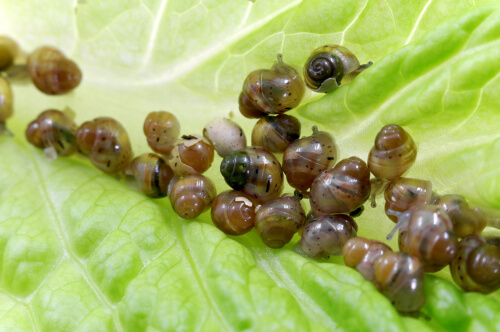Breeding Snails: What You Need To Know To Do It At Home

Whether you like snails or you’re looking into eating or selling them, there are steps you can follow to breed snails at home. Breeding snails have become a profitable business because chefs consider them to be a delicacy.
Information About Snails
Humans have long had a fascination with snails. They have been not only food, but also a representative of the gods, artistic movements, traditions, and even part of medicinal treatments.
Snails are a gastropod mollusk, which means that they have a hard shell that’s used to provide them protection. Although they don’t have legs, they drag themselves around by using a part of their body that’s called a foot.
On a snail’s head are two tentacles. Although many people think they are their eyes, actually they are responsible for their sense of touch. Also, there are two smaller tentacles that are used for smelling.
Snails move by contracting the body while producing a substance called mucus. This moistens the body to produce movement without causing any damage to the snail’s body.
There are people that love snails and others that can’t stand the sight of them. If you are not like the latter and want to learn all about breeding snails at home, then this article can provide you with the information you are looking for.
Breeding Snails at Home
Creating a Proper Area
When breeding snails, you’ll need a terrarium with enough space to allow all of your snails to move around easily. For breeding snails, it’s a good idea to get a glass terrarium that has a cover so that you keep closed for obvious reasons.

Soil for the Terrarium
The terrarium or aquarium that you’ve gotten for breeding snails will need a layer of topsoil. This is so the snails can crawl and defecate without having any problems.
You should try to imitate the natural habitat of these animals as much as possible. Remember, the more pleasant the environment and the closer it is to their natural habitat, the longer the snails will live and they’ll reproduce even more.
Rocks
The terrarium will also need rocks to gives the snails a place to climb and provide them with calcium that contributes to a healthy organism.
Choose the right snails
The first thing you should know if you are breeding snails for food is that not all snails are edible. However, snails are hermaphrodites so you don’t have to worry about getting males and females for reproduction.
Even though they don’t have a specific gender, they will mate for reproduction. Putting them in the same terrarium is enough to encourage reproduction.
Humidity
Snails need high humidity levels to survive and to form mucus. In fact, the humidity in the terrarium should be 100%. You can achieve this by keeping the soil constantly damp.
Likewise, the temperature of the terrarium should be about 20 degrees Celcius. You can do this by exposing the terrarium to direct sunlight or using a heat lamp.
Feeding Snails

Snails are herbivores and eat any type of plant. They especially like aromatic ones, such as thyme, basil, or rosemary.
You don’t have to put them in any particular place within the terrarium. Of course, if the plant starts to die, you should remove it because they won’t eat it and it could produce a bad smell.
So, after reading this article, have you been convinced about starting to breed snails at home?
All cited sources were thoroughly reviewed by our team to ensure their quality, reliability, currency, and validity. The bibliography of this article was considered reliable and of academic or scientific accuracy.
- Fontanilla, J., Garcia-Cuenca, I. & Pérez, J. (1992). Biología de la reproducción del Helix aspersa maxima. Mundo Ganadero, 7, 36-38.